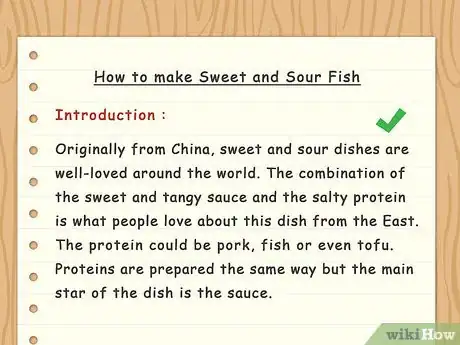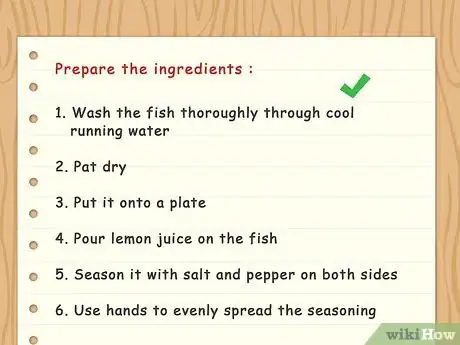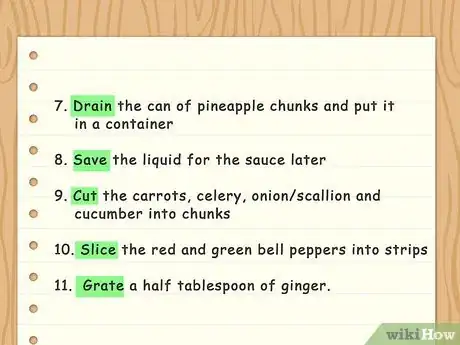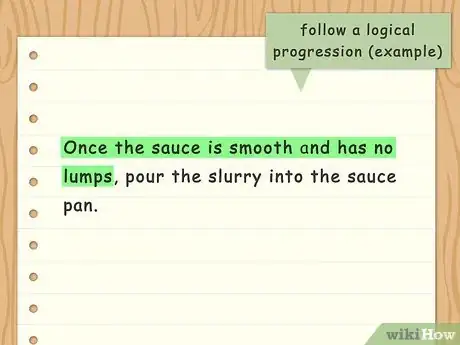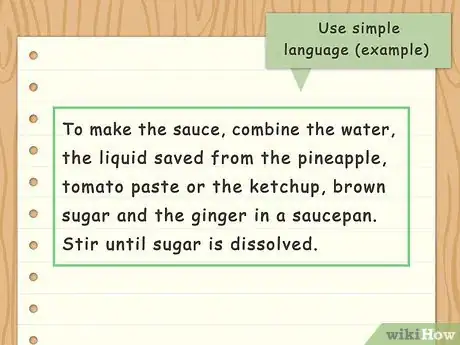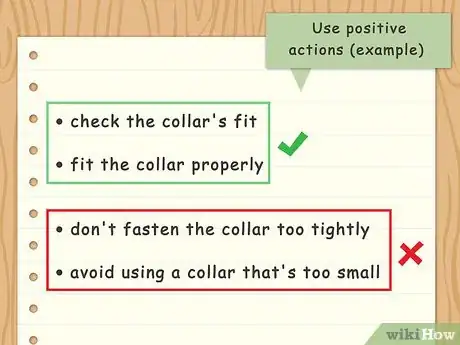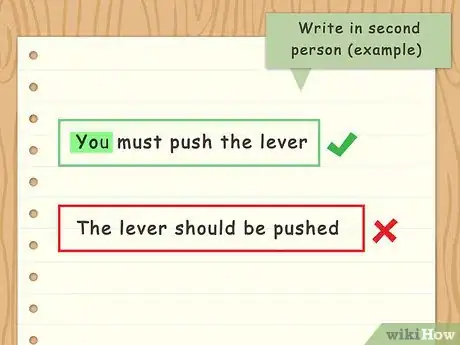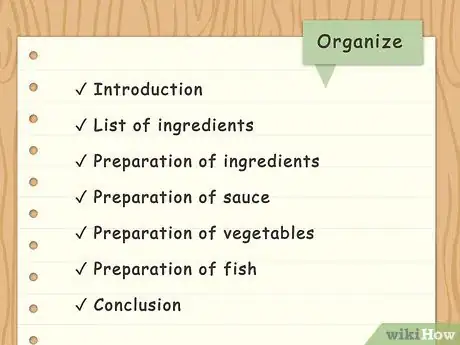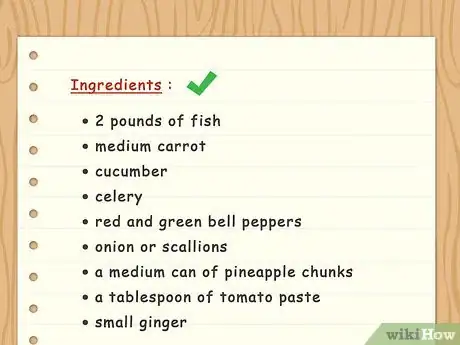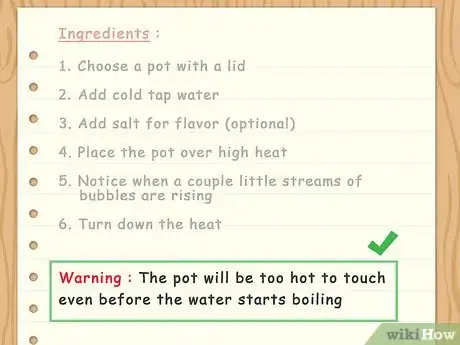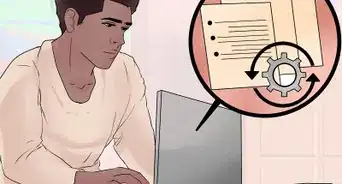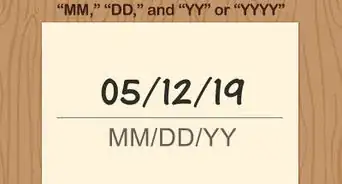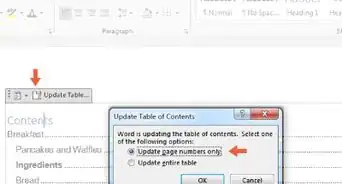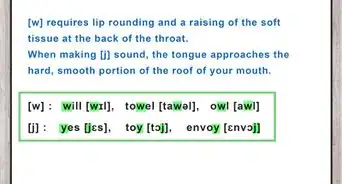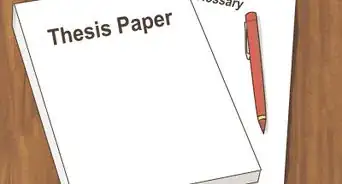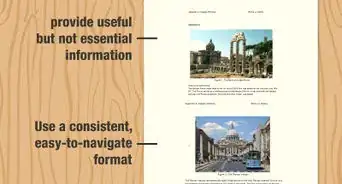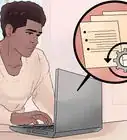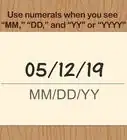This article was co-authored by wikiHow staff writer, Jennifer Mueller, JD. Jennifer Mueller is a wikiHow Content Creator. She specializes in reviewing, fact-checking, and evaluating wikiHow's content to ensure thoroughness and accuracy. Jennifer holds a JD from Indiana University Maurer School of Law in 2006.
There are 10 references cited in this article, which can be found at the bottom of the page.
wikiHow marks an article as reader-approved once it receives enough positive feedback. In this case, several readers have written to tell us that this article was helpful to them, earning it our reader-approved status.
This article has been viewed 402,489 times.
Learn more...
If you're a teacher or technical writer, you probably have to write instructions every day. But for many other people, writing clear instructions can be difficult. You might skip a key step because you assume your readers will automatically do it, or you might confuse your readers by including too many actions in one step. To write clear instructions, first make sure you understand exactly how to complete the task. Follow your instructions literally to make sure they will accomplish the task.[1]
Steps
Understanding the Task
-
1Gather the materials needed. When you're writing instructions, you must first be familiar with the task personally. Get all the tools and supplies you'll need and lay them out in roughly the order you'll need them.[2]
- Write down everything needed. When you write your instructions, you may want to include a list of tools or materials that are necessary to complete the task.
-
2Perform the task yourself. Even if you've successfully completed the task several times, it's still a good idea to walk yourself through it before you write your instructions, so you don't forget anything.[3]
- If you're familiar with the task, you may be prone to taking short cuts, so make sure you don't skip any steps or omit any information your reader may not have.
Advertisement -
3Make a detailed outline. As you perform the task, take a moment to write down what you've done. This helps you keep the instructions in logical order. If you're doing the task as you write down the steps, you know exactly what needs to be done and when.[4]
-
4Define your audience. Instructions for the same task may be written in different ways depending on who will be reading and attempting to follow your instructions. You'll write differently for teenagers than you will for adults.[5]
- Consider the reason as well. The instructions for kids working on a project will be different from the instructions for parents helping their kids with a project.
-
5Draft a short introduction. The introduction tells your readers what your instructions will enable them to do and what the final outcome will be if they complete all instructions. Keep in mind that most people will skip the introduction, or at most skim it, so don't include vital information or key warnings in the introduction.[6]
- If you included an important warning in the introduction, be sure to include it in your steps as well, in case someone skipped the introduction.
- For example, if you're explaining how to make a peanut butter and jelly sandwich, you could mention that peanut butter and jelly is a wholesome, simple option that kids love for lunch or an afternoon snack.
Writing Your Instructions
-
1Divide the task into baby steps. Each step should have a single action, not several, so it's more clear what the person needs to do. If you have more than one or two sentences per step, it probably can be broken up into smaller, less complex steps.[7]
- For example, instead of writing "Put the dog's collar around its neck and attach the leash," break it up into: "Fasten the dog's collar around its neck" and "Attach the leash to the collar."
- "Fasten the dog's collar around its neck" becomes the first step, and "Attach the leash to the collar" becomes the second.
-
2Start each step with an action word. Every step you write should be actionable. Use verbs that show your readers exactly the action they must take to complete that step of the task.[8]
- Word your instructions in terms of what someone must do, not what someone must think or know.
- For example, if you're writing dog-walking instructions, "Check the collar's fit" is more actionable than "Know the dog's collar size."
-
3Follow a logical progression. Assume that your reader is going to jump right in and start working on the task as soon as they read the first step. Typically they aren't going to read your instructions through all the way to the end. If there's something your readers need to know to complete a step, include that information with the step itself.[9]
- If there is any inherent danger in a particular step, include this warning with the step itself, not in your introduction or at the end of your instructions when it's too late.
- Include guides to let your reader know when they've performed the step correctly. For example, you say: "Your dog's collar fits properly if you can place two fingers between the back of the collar and your dog's neck."
-
4Choose your words carefully. Use simple language that anyone can understand. In most cases you want to avoid any jargon or technical terms. If you must use a technical word, provide a short and simple definition.[10]
- For example, if you're explaining how to file a legal brief, you may need to use technical legal terms. Place the plain-language definition first, then give the term used in the courts.
-
5Use positive actions. Generally, it's better to tell your readers what they should do to complete the task, rather than what they shouldn't do. As someone reads instructions, they're in the mindset to complete the task. If you start telling them what not to do, they might get confused and do that thing anyway.[11]
- For example, for dog-walking instructions, it's better to say "check the collar's fit" than "avoid using a collar that's too small."
-
6Write in second person. The pronoun "you" allows you to address your reader directly and can avoid confusion. When you use the pronoun "you," the reader knows exactly what they must do to complete the task, and doesn't have to guess.[12]
- For example, if you wrote "the lever should be pushed," you leave your reader wondering who should push the lever. "You must push the lever" or even "push the lever" leaves no doubt that this is something your reader must do.
-
7Include alternatives. For some tasks, there will be more than one way to accomplish a step or group of steps. Provide the alternative along with the step so that the reader can choose how they want to complete the task.[13]
- For example, if you're explaining how to make a peanut butter and jelly sandwich, you can add: "Substitute almond butter in case of peanut allergies."
-
8Use graphics where helpful. You may have heard the phrase "a picture is worth a thousand words." When it comes to writing clear instructions, sometimes a picture or diagram will make a particular action more understandable for your reader.[14]
- For more technical instructions, make sure the reader can clearly see what's going on in the picture, and the action isn't obscured by tools or hands.
Testing Your Instructions
-
1Organize your instructions into parts. Some complicated tasks have more than one part. If you're writing instructions for a larger task that includes several smaller parts, separate them into separate sections.[15]
- If you're numbering your instructions, restart the numbering with each section. The reader will feel a sense of accomplishment after finishing each part.
- You should still break your task into parts, even if it doesn't have any semi-independent parts. Too many steps can overwhelm your readers.
-
2Try your instructions as written. If you can't follow your instructions as written, nobody else will be able to follow them either. Enlist friends to complete your instructions as well and let you know if they found anything confusing.[16]
- You may have to test your instructions several times, particularly if they are lengthy or complex.
-
3Edit your instructions carefully. Typos and grammatical errors can ruin otherwise clear writing, making your instructions hard to follow. Read through them backwards and forwards to make sure they're error-free.
- If you're not confident in your editing skills, get a friend to look over your instructions for you.
-
4Include a list of tools or supplies needed. Particularly if a task requires specific tools or materials, a list can be helpful for your readers. Put the list towards the beginning of your instructions so your reader can gather materials before they begin the task.
- Think of this like a recipe in a cookbook. Recipes always provide a list of ingredients and cookware at the beginning, so you can gather all these things before you start making the dish.
-
5Provide warnings where appropriate. After testing your instructions, you may realize that there are hidden dangers you didn't address when you first wrote your instructions. Alert your readers to these dangers so they can take precautions.
- For example, if you're writing instructions on how to boil water, you may want to include a warning that the pot will be too hot to touch even before the water starts boiling.
Community Q&A
-
QuestionWhy are instructions important?
 Community AnswerInstructions are important because they teach us how to do things we may not know how to do or how to do them better.
Community AnswerInstructions are important because they teach us how to do things we may not know how to do or how to do them better. -
QuestionShould instructions include examples and pictures?
 Community AnswerInstructions should include examples and pictures because people learn in different ways. Some learners can be reading and writing based, some are visual, and some need examples to completely understand the instructions and process. If you didn't include these, some people would understand, and some people may struggle.
Community AnswerInstructions should include examples and pictures because people learn in different ways. Some learners can be reading and writing based, some are visual, and some need examples to completely understand the instructions and process. If you didn't include these, some people would understand, and some people may struggle. -
QuestionWhy is learning how to communicate in written form important?
 Community AnswerPeople learn in a variety of manners, some do best by consulting a text, and the written form provides a reference for later review.
Community AnswerPeople learn in a variety of manners, some do best by consulting a text, and the written form provides a reference for later review.
References
- ↑ https://blog.hubspot.com/marketing/how-to-guide
- ↑ https://clickhelp.com/clickhelp-technical-writing-blog/how-to-write-comprehensive-instructions-for-use-for-medical-devices/
- ↑ http://jerz.setonhill.edu/writing/technical-writing/instructions-how-to-write-for-busy-grouchy-people/
- ↑ https://news.uga.edu/break-large-tasks-down-into-smaller-more-manageable-pieces/
- ↑ https://blog.hubspot.com/marketing/how-to-guide
- ↑ http://jerz.setonhill.edu/writing/technical-writing/instructions-how-to-write-for-busy-grouchy-people/
- ↑ http://jerz.setonhill.edu/writing/technical-writing/instructions-how-to-write-for-busy-grouchy-people/
- ↑ http://www.techscribe.co.uk/ta/how-to-write-instructions.htm
- ↑ http://www.techscribe.co.uk/ta/how-to-write-instructions.htm
- ↑ https://www.thoughtco.com/instructions-composition-term-1691071
- ↑ https://www.thoughtco.com/instructions-composition-term-1691071
- ↑ https://blog.hubspot.com/marketing/how-to-guide
- ↑ https://files.eric.ed.gov/fulltext/EJ1313146.pdf
- ↑ https://www.getmaintainx.com/blog/how-to-write-work-instructions/
- ↑ https://www.bowdoin.edu/baldwin-center/pdf/handout-breaking-large-projects-down.pdf
- ↑ http://jerz.setonhill.edu/writing/technical-writing/instructions-how-to-write-for-busy-grouchy-people/
About This Article
To write clear instructions, break up the task you're trying to describe into multiple steps that each contain just one action, which will make your instructions easier to follow. Also, start each step with an action word, like in "Cut the apple" or "Drain the pasta," so it's clear what action readers need to take. You should also make sure you're using simple language and avoiding jargon or technical terms whenever possible. If you do need to use a technical term, give a short definition for readers who may not be familiar with it. To learn how to test your instructions to see if they're clear enough, scroll down!




